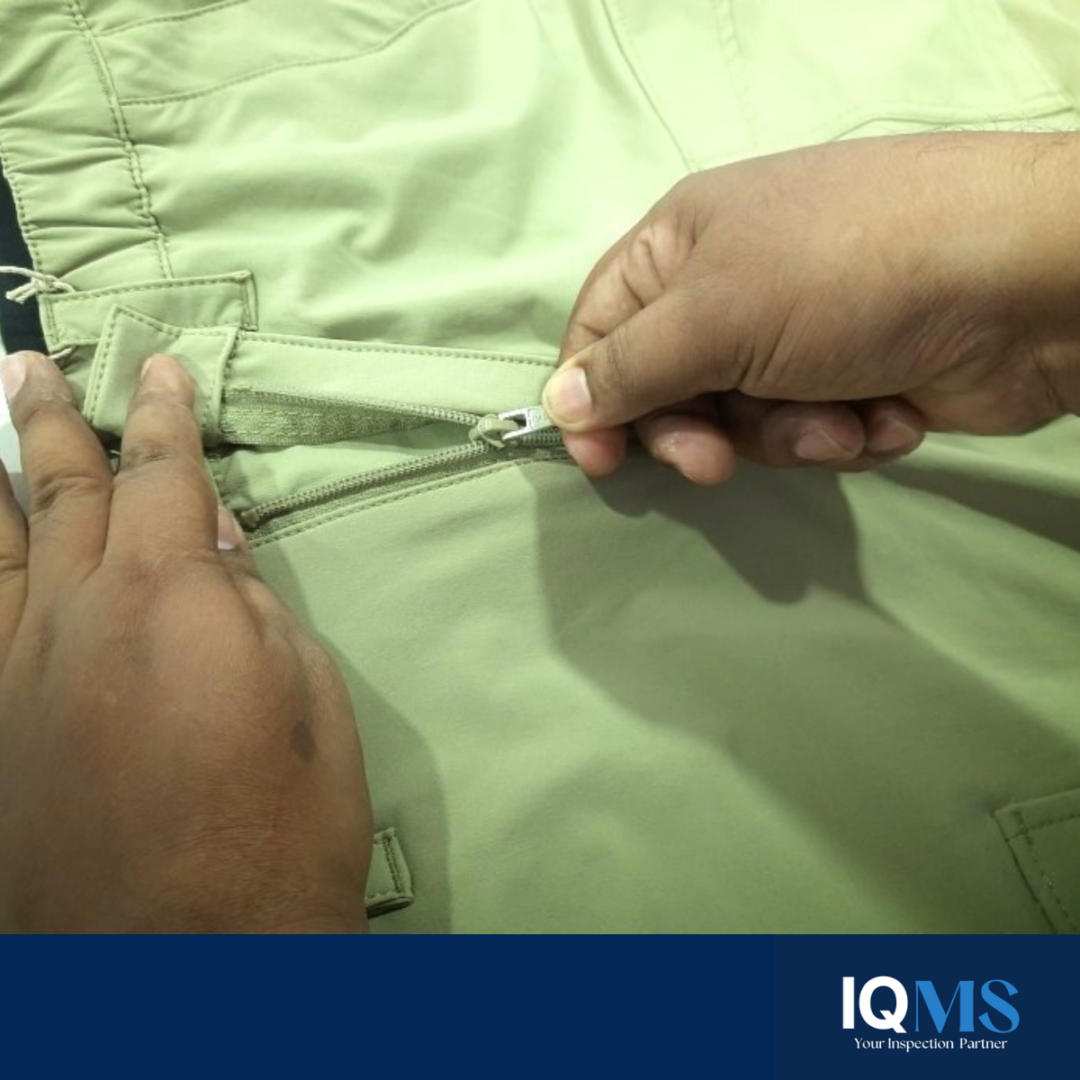Pre-shipment inspection plays a critical role in international trade, ensuring that goods meet the required quality standards and specifications before they are shipped to the buyer. This article seeks to provide a comprehensive understanding of pre-shipment inspection, its purpose, process, different types, and the roles and responsibilities involved. Additionally, it will delve into the challenges faced during this inspection process and present effective strategies to overcome them. By the end, readers will have a clear understanding of the importance and intricacies of pre-shipment inspection.

Discover the importance of pre-shipment inspection in ensuring product quality and compliance.
Understanding the Basics of Pre-Shipment Inspection:
Pre-shipment inspection is a crucial step in the process of international trade. As the name suggests, it involves evaluating goods before they are shipped to their final destination. This evaluation is comprehensive and covers various aspects such as quality, quantity, and compliance with the buyer’s specifications and applicable regulations.
The primary purpose of pre-shipment inspection is to ensure that the goods delivered match the agreed-upon terms. By conducting a thorough examination, buyers can reduce the risk of receiving defective or substandard products. This not only protects their interests but also helps in maintaining a good relationship with the seller.
The Definition and Purpose of Pre-Shipment Inspection:
Pre-shipment inspection is a quality control measure that plays a vital role in international trade. It involves a meticulous examination of the goods to verify their quality, quantity, and compliance with the buyer’s requirements. The inspection is carried out by qualified professionals who are well-versed in the specific industry standards and regulations.
The purpose of pre-shipment inspection is to ensure that the goods meet the buyer’s expectations and comply with the agreed-upon terms. By conducting this inspection, buyers can identify any discrepancies or issues before the goods are shipped. This helps in minimizing the risk of receiving non-conforming products and ensures that the buyer gets what they paid for.
The Importance of Pre-Shipment Inspection in Trade:
Pre-shipment inspection plays a crucial role in international trade, benefiting both the buyer and the seller. By verifying the quality, quantity, and compliance of the goods, it acts as a safeguard against potential disputes and financial losses.
For buyers, pre-shipment inspection provides assurance that the goods they are purchasing meet the required standards. It helps in building trust and confidence in the seller, as buyers can rely on the inspection report to validate the quality of the products. Moreover, it ensures that the buyer receives the goods as per their specifications, reducing the chances of any post-shipment issues.
For sellers, pre-shipment inspection contributes to maintaining a good reputation and customer satisfaction. By delivering high-quality products that meet the buyer’s expectations, sellers can enhance their credibility and increase the likelihood of repeat business. Additionally, pre-shipment inspection ensures fair competition by holding all importers to the same quality standards, creating a level playing field for everyone.
In conclusion, pre-shipment inspection is a critical step in international trade. It provides assurance to both buyers and sellers, ensuring that the goods delivered are of the expected quality and comply with the agreed-upon terms. By conducting a thorough examination, pre-shipment inspection helps in minimizing risks, maintaining trust, and fostering fair competition in the global marketplace.
The Process of Pre-Shipment Inspection
Pre-shipment inspection is an essential step in international trade to ensure the quality and conformity of goods before they are shipped to the buyer. This process involves a series of key steps that help in evaluating the products and identifying any discrepancies or non-compliance with the buyer’s specifications.
Key Steps Involved in Pre-Shipment Inspection
The pre-shipment inspection process typically consists of several key steps. First, the exporter notifies the inspection agency about the impending shipment. This notification includes important details such as the type and quantity of goods, the manufacturing location, and the expected shipping date.
Upon receiving the notification, the inspection agency assigns a qualified inspector to evaluate the goods. These inspectors are trained professionals who have expertise in assessing the quality and conformity of various products. They are well-versed in the specific industry standards and regulations that apply to different types of goods.
The assigned inspector then visits the supplier’s premises to conduct a thorough examination of the products. They carefully inspect the goods for quality, quantity, and conformity with the buyer’s specifications. This involves checking the physical attributes of the products, such as dimensions, weight, color, and overall appearance.
In addition to visual inspection, the inspector may also perform tests to ensure the durability and functionality of the goods. For example, if the products are electronic devices, the inspector may conduct electrical tests to verify their performance. Similarly, if the goods are chemical substances, the inspector may carry out chemical tests to ensure compliance with safety regulations.
After completing the inspection, the inspector prepares a detailed report outlining the findings. This report includes a comprehensive assessment of the products, highlighting any deviations from the buyer’s specifications or quality standards. The report also includes photographs and supporting documentation to provide a clear understanding of the inspection results.
Once the report is prepared, the inspector submits it to both the exporter and importer for review. This allows both parties to assess the quality and conformity of the goods and address any concerns or discrepancies. The report serves as a crucial document that helps in making informed decisions regarding the shipment and ensures transparency in the trade process.
Timeframe for Conducting Pre-Shipment Inspection:
Timing is crucial in pre-shipment inspection to ensure a smooth flow of trade. Ideally, the inspection should be carried out after the goods are manufactured and packed but before they are loaded onto the shipping vessel. This way, any discrepancies or non-compliance can be rectified before the goods leave the supplier’s premises.
To determine the appropriate timeframe for the inspection, various factors need to be considered. These factors include production schedules, transportation arrangements, and the availability of inspection personnel. It is important to establish a mutually agreed-upon timeframe that allows sufficient time for the inspection without causing delays in the shipment process.
Coordinating the inspection timing with the production schedule is crucial to ensure that the goods are fully ready for evaluation. This requires effective communication between the exporter, the inspection agency, and the supplier. By aligning the inspection with the production timeline, any necessary adjustments or improvements can be made to the goods before they are shipped.
Transportation arrangements also play a significant role in determining the timeframe for pre-shipment inspection. The inspection should ideally take place when the goods are readily available at the supplier’s premises and can be easily accessed by the inspector. This ensures that the inspection process is efficient and does not cause unnecessary delays in the transportation of the goods.
Furthermore, the availability of inspection personnel should be considered when scheduling the inspection. The inspection agency needs to ensure that qualified inspectors are available to conduct the evaluation within the desired timeframe. This requires effective planning and coordination to avoid any potential conflicts or delays in the inspection process.
In conclusion, pre-shipment inspection is a critical step in international trade that helps in ensuring the quality and conformity of goods. By following the key steps involved in this process and establishing an appropriate timeframe, exporters and importers can enhance the efficiency and reliability of their trade transactions.
Different Types of Pre-Shipment Inspections:
Random Sampling Inspection:
Random sampling inspection is the most commonly used method in pre-shipment inspection. In this approach, the inspector selects a representative sample from the batch or lot of goods. The selected samples are thoroughly examined and tested against the agreed-upon quality standards. The results obtained from the sample are then extrapolated to assess the quality of the entire shipment. Random sampling inspection provides a fair representation of the overall quality and allows for timely identification of any defects or non-conformities.
Full Quantity Inspection:
In certain cases, especially when dealing with high-value or bulk shipments, full quantity inspection may be necessary. This involves inspecting each individual item or unit of the shipment to ensure that all the products are present and meet the specified quality requirements. Full quantity inspection is commonly used for sensitive or specialized products where any missing or defective items can have significant consequences or compromise the ongoing operations of the buyer.
Roles and Responsibilities in Pre-Shipment Inspection
Role of the Exporter in Pre-Shipment Inspection:
The exporter plays a crucial role in facilitating pre-shipment inspection. They are responsible for notifying the inspection agency in advance, providing the necessary documentation and information, and coordinating with the inspector to access the goods for inspection purposes. The exporter must ensure that the products meet the required standards and specifications before they are presented for inspection, as any deficiencies discovered during the inspection may result in delays or rejection of the shipment.
Role of the Importer in Pre-Shipment Inspection:
The importer also has a significant role in pre-shipment inspection. They must cooperate with the exporter and the inspection agency to ensure a smooth inspection process. The importer should provide the necessary details and specifications to the exporter, enabling them to deliver the products as agreed upon. Additionally, the importer is responsible for reviewing the inspection report and promptly addressing any raised issues or concerns. Open communication between all parties involved is essential to streamline the inspection process and avoid disputes.
Challenges and Solutions in Pre-Shipment Inspection
Common Issues Faced During Pre-Shipment Inspection:
Pre-shipment inspection may encounter several challenges, ranging from logistical issues to non-compliance with regulations. Common challenges include delays in shipment, inadequate documentation, transportation and handling concerns, and discrepancies in quality or quantity. Identifying these issues in a timely manner is crucial to prevent potential disruptions to trade and ensure that the goods comply with the desired standards.
Effective Strategies to Overcome Inspection Challenges
To overcome challenges in pre-shipment inspection, proactive strategies can be employed. These include establishing clear communication channels among all parties involved, conducting regular and thorough inspections, ensuring compliance with relevant regulations and standards, and maintaining accurate documentation throughout the inspection process. Additionally, implementing advanced quality control techniques, such as employing automated inspection tools or utilizing data analysis, can enhance efficiency and effectiveness in identifying and addressing potential issues.
In conclusion:
pre-shipment inspection is a critical process in international trade that safeguards the interests of both buyers and sellers. By ensuring that goods comply with the agreed-upon quality standards and specifications, pre-shipment inspection minimizes the risk of receiving defective or substandard products. Through understanding the basics, different types, the process, and the roles and responsibilities involved in pre-shipment inspection, stakeholders can navigate the complexities of international trade more effectively. By addressing challenges proactively and implementing effective solutions, businesses can streamline their inspection processes, foster trust between trading partners, and ultimately enhance their competitiveness in the global marketplace.



